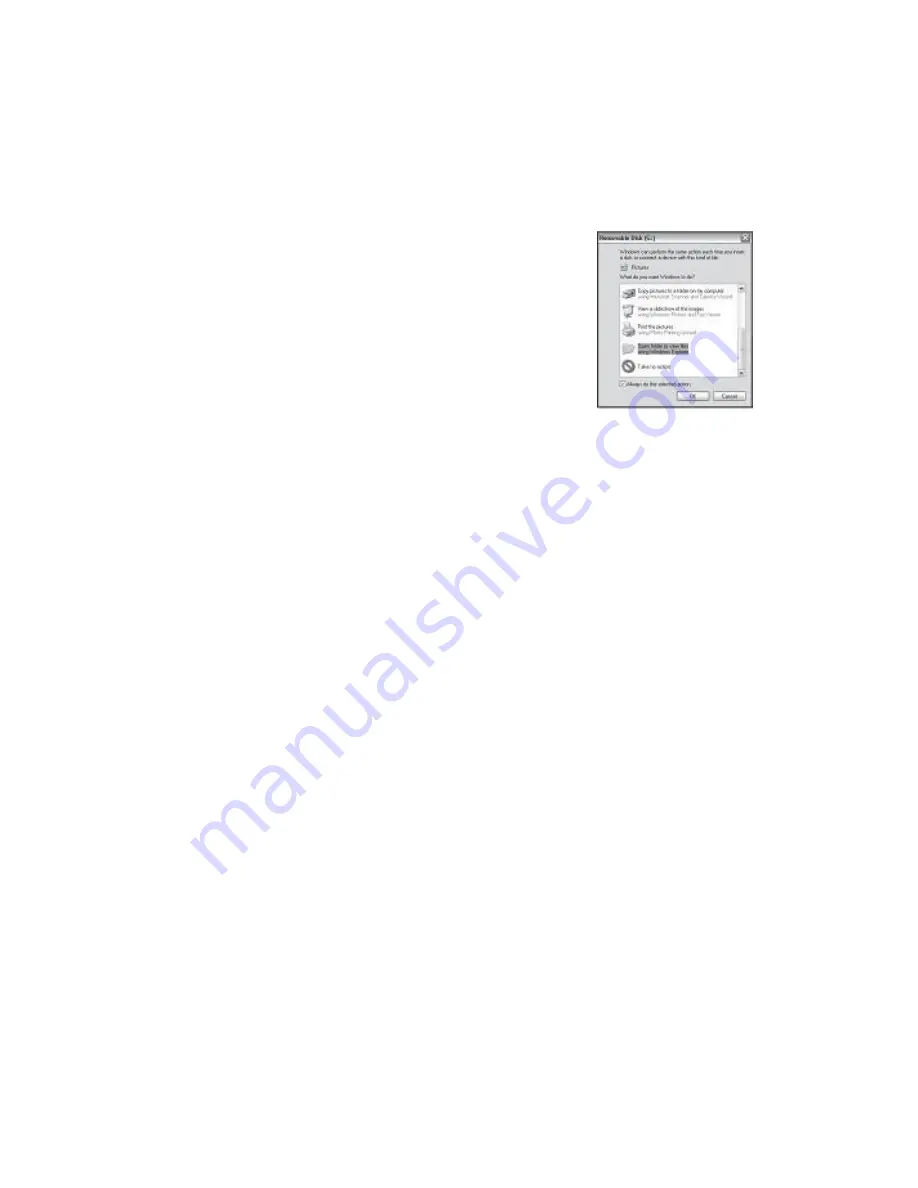
25
The
KeepGuard Cam
will be recognized as a standard
″USB Mass Storage″
device (this may take several seconds the first time you connect it). If you
would rather leave your camera in the woods and just pull its SD card out, an
SD card reader works the same way as described in this section once the card
is inserted and the reader is connected to your computer.
With Windows XP or later, you can then simply use
the options in the pop-up window to copy, view, or
print your photos (
right
).
On all Windows OS, the
KeepGuard Cam
will also be
listed as a
″Removable Disk″ if you open the ″My
Computer″ window (on Macs, an icon will appear
on your desktop). The
KeepGuard Cam′
s photo files
are named″PICT0001.JPG″etc, and are located in the ″DCIM
﹨
100EK113″ folder
on this
″Removable Disk″. Video file names will end with ″.ASF″. You may copy
the photos/videos to your hard drive as you would any file. Just copy/paste or
drag the file names or icons to your drive or desktop.
After the photos are copied to your hard drive, you can disconnect the
KeepGuard Cam
. (On Mac computers, drag the
″disk″ that appeared on your
desktop when the camera was connected into your Trash to
″eject″ it before
disconnecting.) The .jpg standard files from the
KeepGuard Cam
may be
viewed and edited with any photo software you choose to use. The
ASF
video
files may be viewed with Windows Media Player (version 7 or later) as well as
other video playback programs that may have been supplied with your
computer, or are available online.
*″.ASF″ video files may require additional software for viewing on a Mac.






































